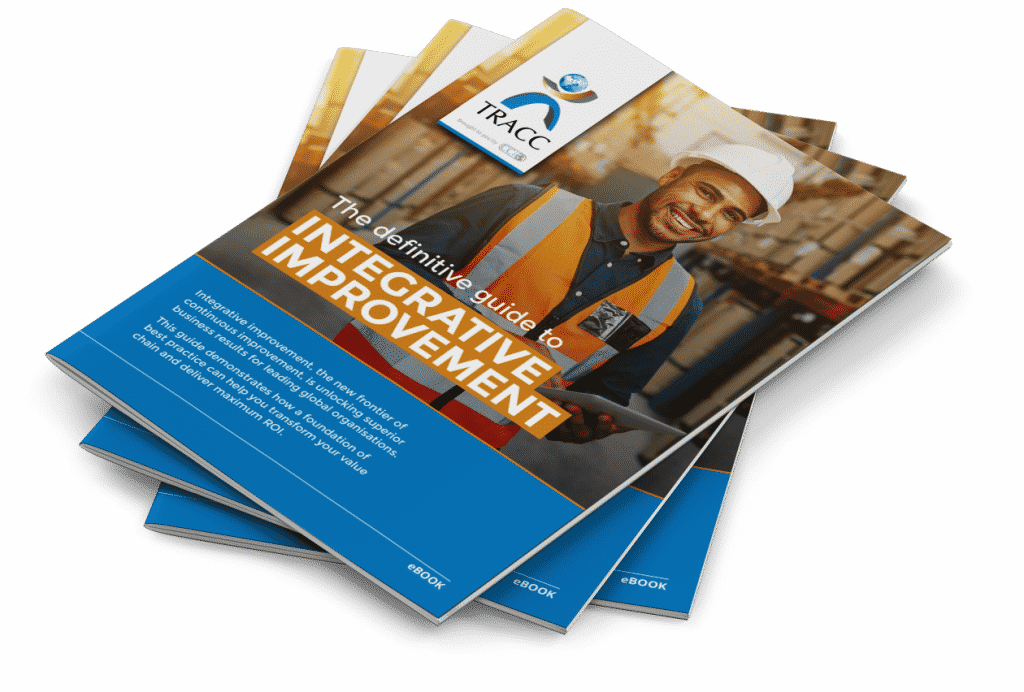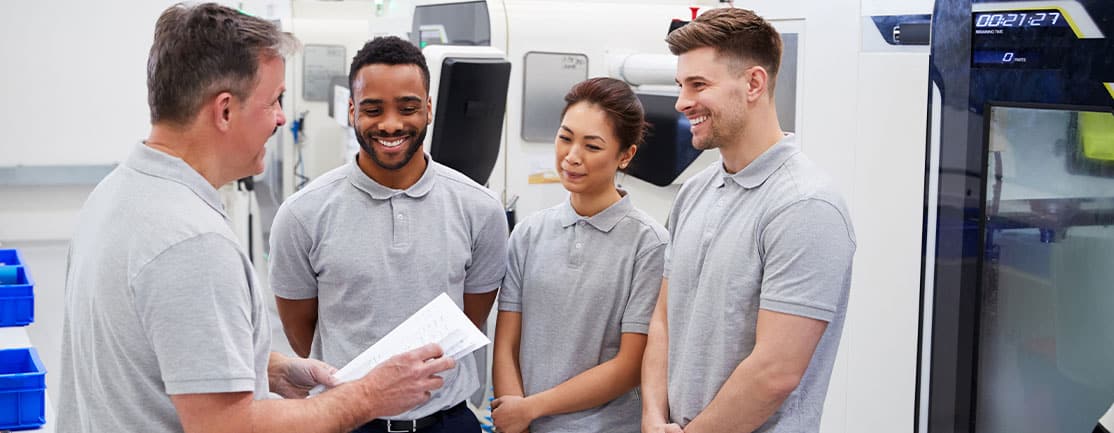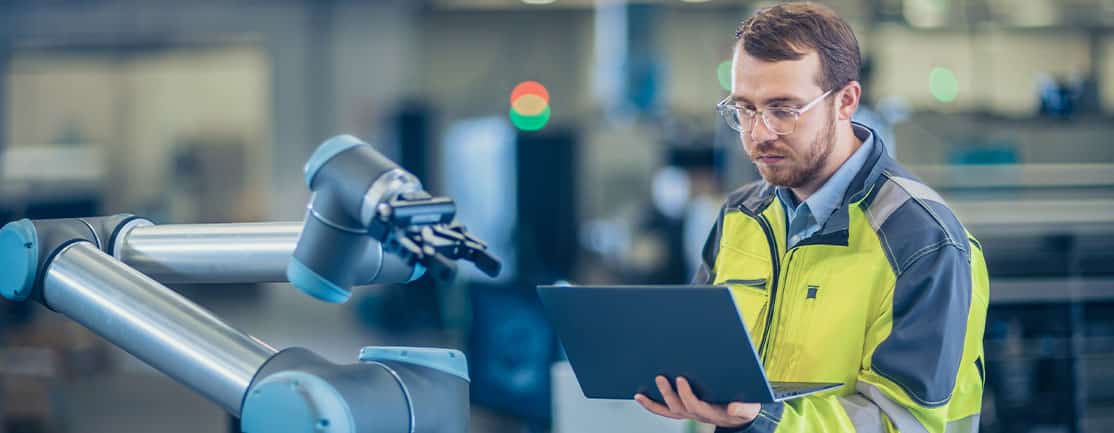
3 key components of a sustainable continuous improvement system
Continuous improvement (CI) has been a highly attractive endeavour for decades, yet many organisations continue to face challenges in turning CI aspirations into realities. Here’s how to build a sustainable continuous improvement system where improvement becomes part of the organisational culture.
Implementing and building a sustainable continuous improvement system entails more than executing numerous process improvement projects. Driving sustainable results over time and throughout the organisation requires a continuous improvement culture, ‘the way we do work’.
However, organisations continue to face challenges with implementing a sustainable improvement system as the path to building a continuous improvement culture is often characterised by implementation efforts that fall short of expectations. In fact, the success rate for these improvement efforts is less than 60%. Where did the 40%-plus go wrong? How does an organisation build a continuous improvement system that turns expectations into realities and is sustainable? This blog addresses this question.
How to build a sustainable continuous improvement system
Sustainable improvement requires engagement at all levels as well as a robust management system that addresses the long-term, incremental nature of culture-based change. Such a system requires three key elements to effectively drive the transformation process:
- Maturity-based transformation
- Functional integration
- Sustainability through a three-tiered system
Component 1: Maturity-based transformation
Changing an organisation’s culture and engaging all employees and stakeholders to embrace changes and develop their skills and competencies to effect process improvements takes time. Transferring process improvement ownership from technical experts to front-line workers requires structural redesign around lateral processes. The workers can only then be held accountable for process improvement as they become competent in every new work element. Leaders, too, need to embrace their own professional development as they play a critical role in successful transformation and driving culture change. They need to understand the fundamental principles of continuous improvement and commit to using them to lead the organisation, and they need to buy into a leadership style where they transition from ‘cop to coach’.
Before embarking on these culture-based changes, organisations need to assess their baseline best practice maturity to determine where a particular site or process area is in the continuous improvement cycle. This prevents organisations from spending too much time trying to implement initiatives which are not appropriate at the organisation’s current maturity level. Without a maturity-based transformation plan, perfectly good approaches often fail to meet their organisational goals.
A maturity assessment should reveal the gaps between the baseline state and the desired end state or vision for the organisation. It highlights priority areas and provides an implementation road map, ensuring consistency in the long-term execution plan required by culture-based change.
Due to Industry 4.0 and its wave of new technologies, manufacturers must make the switch to digital to remain competitive. They need to build a culture that is willing to evolve and that values agility and adaptability – while ensuring the improvement process journey can be achieved at a realistic pace. A maturity-based transformation is essential to sustainable process improvement: Assess current digital capabilities and then chart milestones and timelines to adopt new technologies and digital skills and, ultimately, to implement a digital operating system.
Download the white paper Digital operating systems: The next generation of production systems for more on the transition from corporate production systems to DOS.
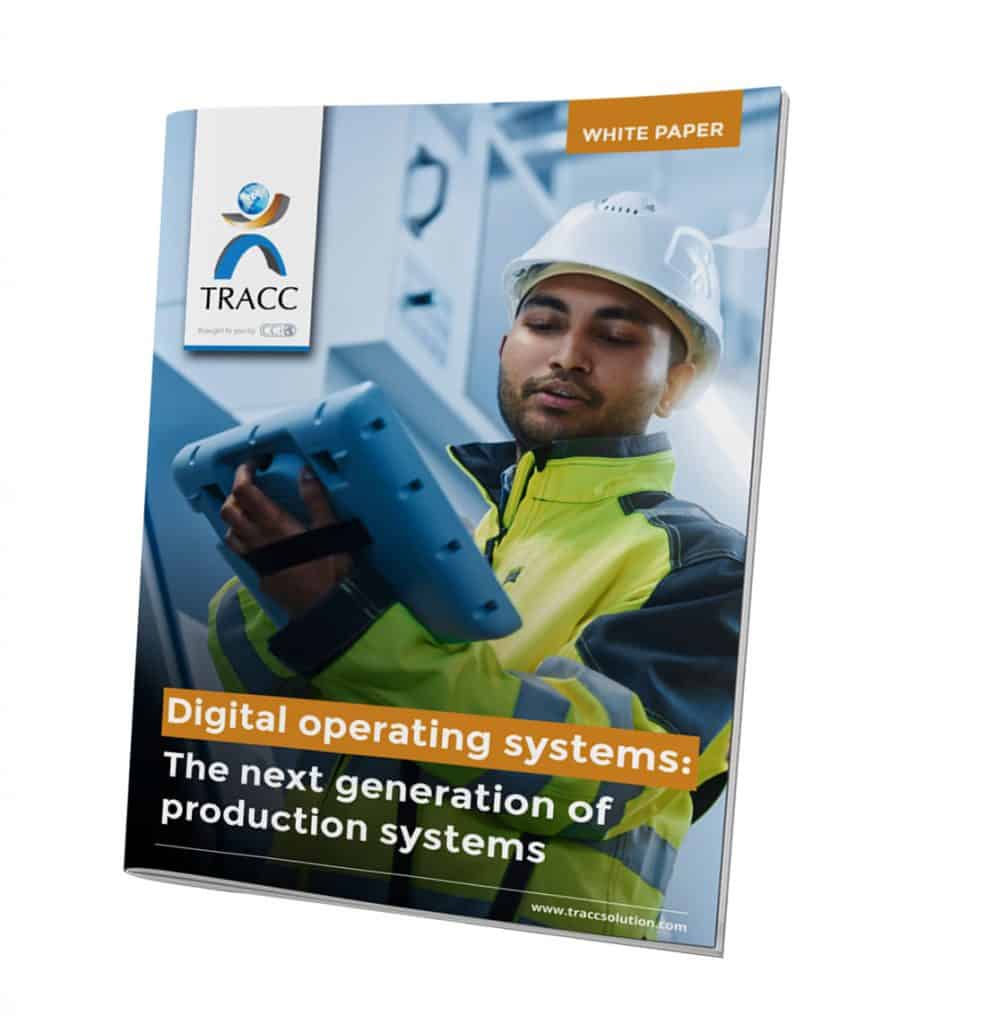
Component 2: Functional integration
One of the key principles of an integrative improvement approach is that the organisation should be designed around processes, products and customers – and not around functions.
Multifunctional teams optimise processes and value streams to deliver superior products to ‘delighted’ customers. A sustainable continuous improvement system must drive this process-based approach and prevent possible sub-optimisation of functional improvement approaches. This means that functional improvement requirements (quality, maintenance, demand and supply planning, HR, etc.) and the various continuous improvement methodologies used are on the same platform and are executed simultaneously and in concert with one another.
The TRACC Community webinar Developing organisational capability for the future world of work looked at the importance of functional integration and, more specifically, organisational design in the digital age. Speakers explained how the critical principles that underpin successful organisational design enable a successful digital transition.
Some of these principles in a manufacturing and supply chain context include:
| 1. | Delayering | The flattening of organisational structures; three-tier structures (strategic, systemic, situational); evolving to a contemporary matrix. | |
| 2. | The creation of whole jobs | No machine minders; operators are multiskilled across a process area; breaking down of silos. | |
| 3. | Standardisation, rationalisation and consolidation | Reduced number of roles and job titles, consistencies and pay equalities. | |
| 4. | Self-sufficient, accountable teams | SHERQ at source; autonomous maintenance; CI and problem-solving capabilities are developed. | |
| 5. | Menial manual jobs confined | Non-core, non-value-adding tasks and roles are reduced; technology solutions replace dependencies. |
The following diagram represents the three stages of organisational design maturity that organisations must move through to position themselves for a successful digital transformation:
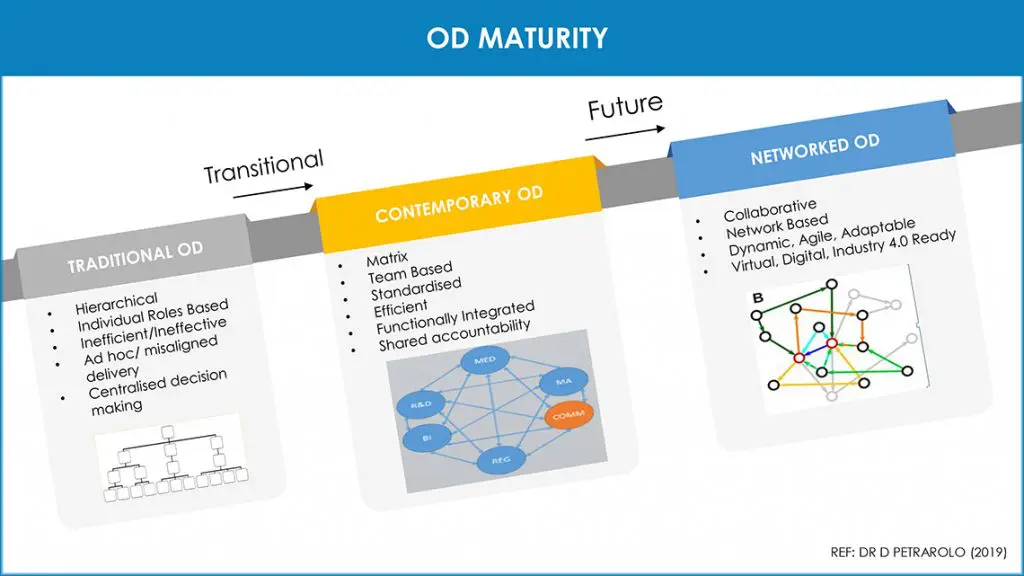
Component 3: Sustainability through a three-tiered system
Sustainable performance improvement does not result from the mere application of continuous improvement tools. The introduction of process maps, autonomous maintenance checks, 5S, 5Why problem-solving forms, visual scoreboards, and other improvement initiatives are not sustainable without supporting systems and underpinning performance management principles, systems and tools.
Sustainable continuous improvement requires a three-tier system:
1. Operating practices and tools underpinned by 2. enabling systems, and these systems in turn are derived from and resting on 3. fundamental principles, mindsets and mental models (illustrated in the diagram below).
A complete integrative improvement approach requires that these management principles, systems and tools are ready in all functions to ensure that improvements are sustainable, that the transformation process is managed effectively through a maturity-based system, and that the functional improvement approaches and methodologies are integrated. The long-term nature of the transformation requires a systemic, multidimensional approach to ensure structural, process and behavioural alignment.
The structural components of an integrative improvement approach are illustrated below:
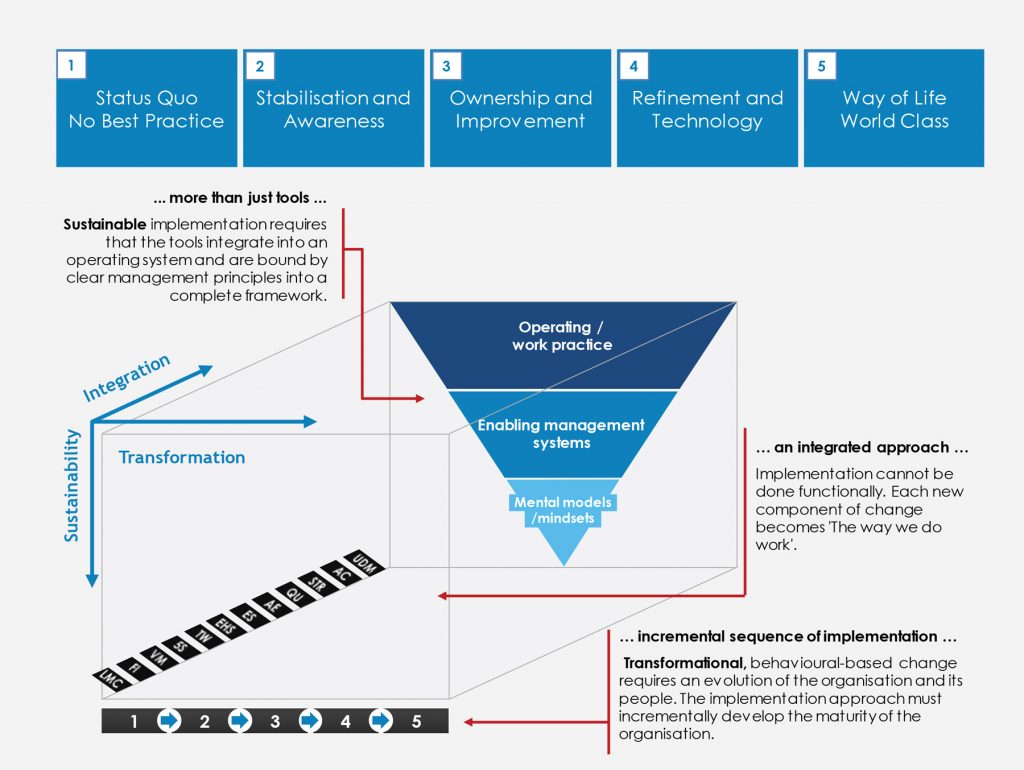
By investing in a business improvement system that integrates these three key elements of continuous improvement, organisations can leapfrog many years’ implementation experience to generate exponential savings and competitive advantage substantially sooner than organisations trying to develop this in-house.
Download the eBook The Definitive Guide to Integrative Improvement to find out more about how this approach can drive sustainable competitive advantage for your business.
